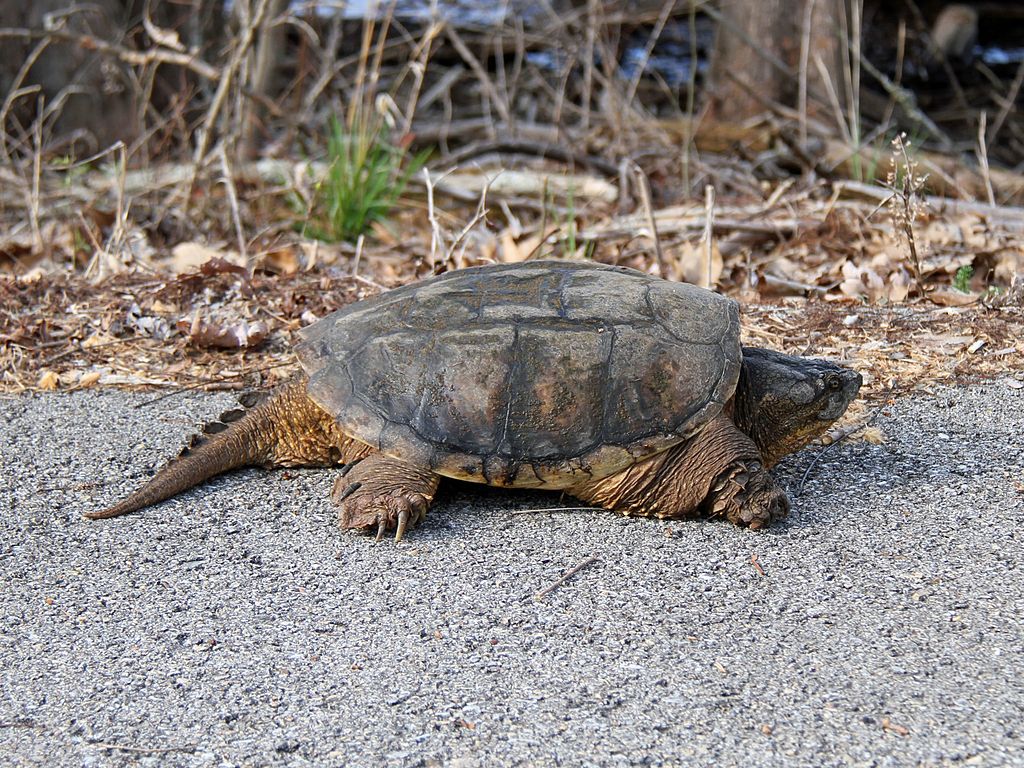Table of Contents
ToggleIntroduction

With their prehistoric appearance and fierce demeanor, Snapping turtles have long captured the curiosity and intrigue of wildlife enthusiasts and researchers alike. These ancient reptiles belong to the Chelydrid family and are renowned for their powerful jaws, distinctive beak-like snouts snapping Turtles’ breath-holding time, and resilient nature. Can Snapping Turtles Hold Their Breath? However, one of the most fascinating aspects of snapping turtles is their ability to endure extended periods underwater without needing to surface for air. From their specialized respiratory systems to their remarkable adaptations for survival, exploring the duration of time these creatures can remain submerged reveals a captivating aspect of their biology.
Anatomy And Adaptations: The Blueprint For Aquatic Prowess
To comprehend the snapping turtle’s remarkable breath-holding prowess, understanding its anatomy and physiological adaptations is crucial. These turtles boast a unique respiratory system, equipped to thrive in aquatic environments.
Specialized Respiration: Snapping turtles possess lungs adapted for prolonged underwater stays. These lungs function as reservoirs, allowing them to extract oxygen efficiently from water by absorbing it through their highly vascularized tissues.
Slow Metabolism: Their metabolic rate slows significantly when submerged, conserving oxygen and enabling them to endure extended periods without surfacing. This adaptability contributes substantially to their impressive breath-holding capabilities.
Anaerobic Respiration: In dire situations, snapping turtles can resort to anaerobic respiration, which provides energy without oxygen. This adaptation aids survival during extended periods without access to air.
Duration Of Submergence: Unraveling The Enigma
Species and Size: Different species and sizes exhibit varying breath-holding capacities. Larger snapping turtles tend to hold their breath longer than their smaller counterparts.
Environmental Conditions: Factors such as water temperature, oxygen levels, and the turtle’s health play pivotal roles. Colder water temperatures allow for a reduced metabolic rate, enabling longer submergence.
Activity Level: The turtle’s activity level before submergence influences its oxygen consumption. Before submerging, a resting or motionless state conserves oxygen and extends the breath-holding duration.
Observations And Studies: Insights Into Underwater Tenacity

Field Studies: Researchers have conducted field studies observing snapping turtles in their natural habitats. These observations have revealed instances where turtles remained submerged for impressive durations, ranging from 15 minutes to several hours.
Controlled Experiments: Controlled experiments in laboratory settings have further elucidated the breath-holding capacities of snapping turtles. These experiments involve monitoring oxygen consumption and metabolic rates to understand their underwater endurance better.
Real-Life Scenarios: Unveiling Extraordinary Feats
Overwintering: During winter, when water bodies freeze over, snapping turtles retreat to the bottom, where they can remain submerged under ice for months. This remarkable survival strategy showcases their ability to endure prolonged periods without access to air.
Predatory Ambush: Snapping turtles are ambush predators, often lying in wait for extended periods underwater, patiently awaiting unsuspecting prey. This behavior underscores their exceptional breath-holding capabilities essential for successful hunting.
Conservation Significance: Protecting A Marvel Of Nature
Habitat Preservation: Preserving their natural habitats ensures suitable conditions for these turtles to thrive. Healthy ecosystems with clean water and ample resources are crucial for sustaining their populations.
Mitigating Human Impact: Human activities like pollution, habitat destruction, and accidental trapping pose significant threats to snapping turtles. Awareness of their unique adaptations emphasizes the need for responsible conservation efforts to safeguard their existence.
Physiological Mechanisms: Unraveling Underwater Survival Strategies
Buoyancy Control: Snapping turtles can regulate their buoyancy, allowing them to achieve neutral buoyancy underwater, reducing the effort required to remain submerged.
Cloacal Respiration: Besides extracting oxygen from the water through their lungs, snapping turtles can absorb oxygen through specialized tissues in their cloaca, enhancing their underwater endurance.
Metabolic Flexibility

Lactic Acid Tolerance: When in oxygen-deprived conditions, snapping turtles can tolerate elevated levels of lactic acid, a byproduct of anaerobic respiration. This tolerance extends their ability to endure prolonged periods without oxygen.
Metabolic Depression: Underwater, these turtles can significantly reduce their metabolic rate, conserving energy and oxygen. This reduction allows them to stay submerged for extended periods without the need to surface frequently.
Temperature Effects: Colder water temperatures reduce the metabolic rate of snapping turtles, enabling them to survive for longer durations without surfacing. This adaptation becomes crucial during colder seasons or regions with more unconscious water bodies.
Scientific Research And Observations: Insights From Studies
Respirometry Studies: Controlled respirometry experiments involve measuring the oxygen consumption rates of snapping turtles in laboratory conditions. These studies help quantify the turtles’ metabolic rates and oxygen utilization patterns during submersion.
Field Observations: Scientists and researchers conduct field observations, often employing telemetry or tracking methods to monitor snapping turtles’ behavior and submergence patterns in their natural habitats. These observations offer real-world data on their underwater behaviors and endurance.
Factors Influencing Breath-Holding Duration
Size and Age: Larger snapping turtles tend to have greater oxygen reserves and can hold their breath longer than younger or smaller individuals.
Health and Condition: The health and overall condition of the turtle influence its ability to endure extended periods without surfacing. Physically compromised individuals may have reduced breath-holding capacities.
Behavioral Factors: The activity level before submergence significantly affects oxygen consumption. Turtles in a resting state preserve oxygen, extending their submergence duration.
Conclusion
The enigmatic nature of snapping turtles extends beyond their fearsome appearance and ancient lineage. Their remarkable ability to hold their breath underwater showcases a convergence of physiological adaptations and behavioral strategies honed through evolution. Snapping turtles can endure extended periods submerged beneath the water’s surface by leveraging specialized respiratory systems, metabolic adaptations, and behavioral adjustments.
While exact figures regarding the precise duration of snapping turtles can hold their breath vary due to individual differences and environmental factors, these creatures can typically stay underwater for long periods. Their capacity for extended breath-holding is a testament to their resilience and adaptability in various aquatic habitats.







